What is the most ecological packaging solution?
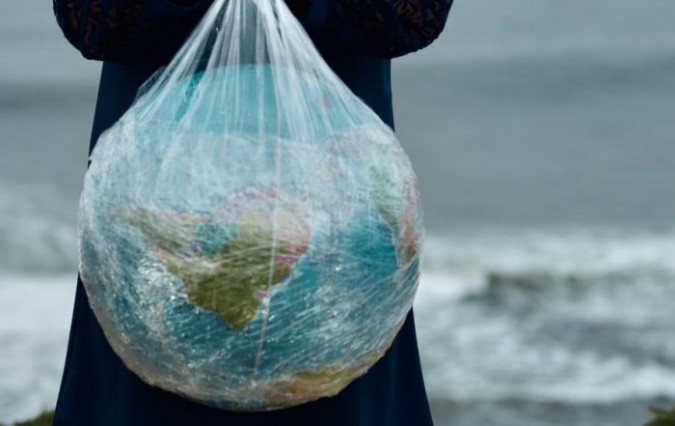
Different types of sustainable packaging
Today, the packaging industry, the sustainability issue and the impact on our environment are inseparable. In our previous blog, we already discussed what you can do to create a sustainable image. We all realize that we need to drastically reduce the use of plastic. But what are the possibilities and solutions to achieve this?
At Marisan, we are always looking for ecological alternatives to our existing packaging solutions. We look at what’s going on in the market and have noticed quite quickly that the environmentally conscious consumer is becoming more and more important. Consumers are switching to ‘green’ buying, in other words consciously buying environmentally friendly alternatives. Discover in this blog the different types of sustainable packaging, each with some of their advantages and disadvantages!
Paper carrier bags
Paper carrier bags are available in different versions and with different finishes. Most paper bags are made from graphic paper, namely kraft paper, which is known for its strength, or art paper for the most luxurious finishing. Did you know that a small luxury bag can already carry up to 12 kg? In terms of both cost price and reusability, these carrier bags are the perfect alternative to the classic plastic bags. It shows to your clients that you are environmentally conscious!
Advantages
- Easily recyclable
- Paper carrier bags can be reused several times
- Fairly stiff and strong material with a vintage look
Disadvantages
- Not resistant to rain
- A paper bag requires significantly more weight to achieve the same carrying capacity than a plastic bag
- Lots of land needed for production forests where threes grow for the paper industry
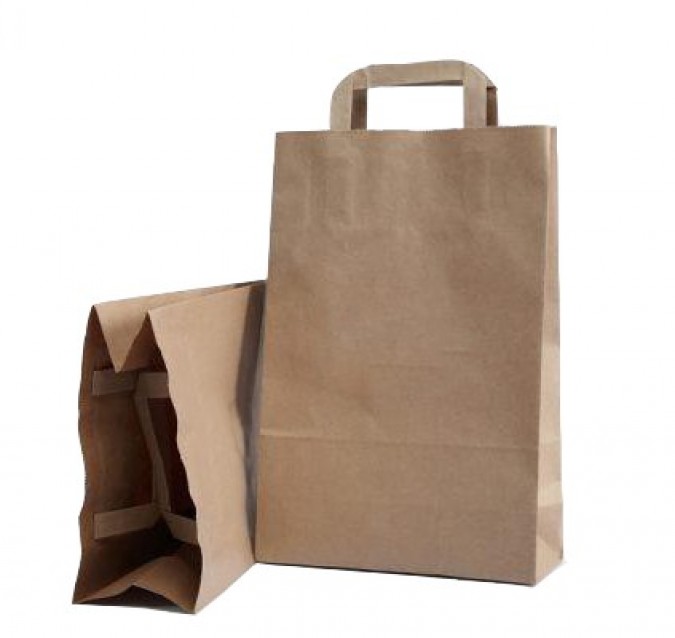
Biodegradable bags : oxo-degradable and compostable bags
Oxo-degradable plastics are polymers to which chemical additives are added. This ensures that the material breaks down faster when it comes into contact with UV light, oxygen or heat. In the production, these bags have a low cost and lower environmental impact. Unlike the oxo-degradable bags, the compostable bags are fully biodegradable. These bags are produced from vegetable materials, such as corn starch or sugar cane. The use of these vegetable materials ensures that no harmful toxins are released during the degradation and composting process.
Advantages
- Low environmental impact during the production and less CO2 required
- No toxins are released during degradation
- When completely degraded, they can provide the soil with nutrients
Disadvantages
- The oxo-degradable bags are never 100% biodegradable, microplastics always remain in our nature
- More susceptible to moisture and light influences
- Currently high transport costs due to long distances for the import of bio materials
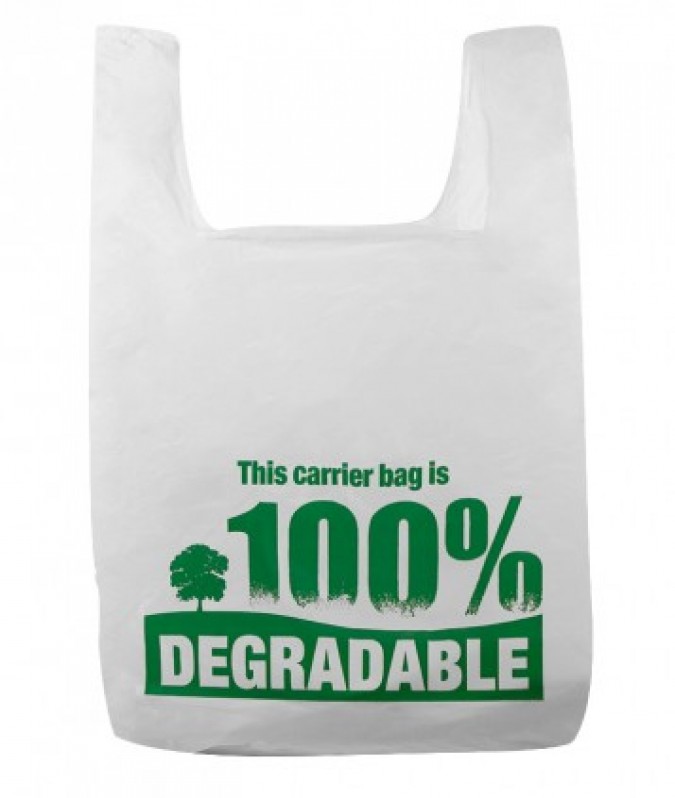
Cotton bags
Cotton is one of the most used fabrics in the world. It is used for the production of clothing, sheets, towels, underwear, bags and much more. Despite the fact that the production of cotton requires an enormous amount of water, the material is recyclable for the environment. Organic cotton has been gaining popularity in recent years. Thus, it would be the perfect fabric for making various personal products such as bed linen and towels.
Advantages
- Cotton carrier bags are biodegradable and are made from renewable materials
- Cotton production produces little emission of CO2 or other greenhouse gasses
- These bags are reusable and durable. You can easily wash or clean them and they are often resistant to wear
Disadvantages
- As indicated, an enormous amount of water is required for the production of cotton. Did you know that sometimes, up to 20.000 liters are needed for 1 kilo of cotton?
- A lot of fertilizers, pesticides and chemicals are used during the cultivation of cotton
- Cotton bags need to be reused thousands of times to achieve the environmental performance of plastic bags
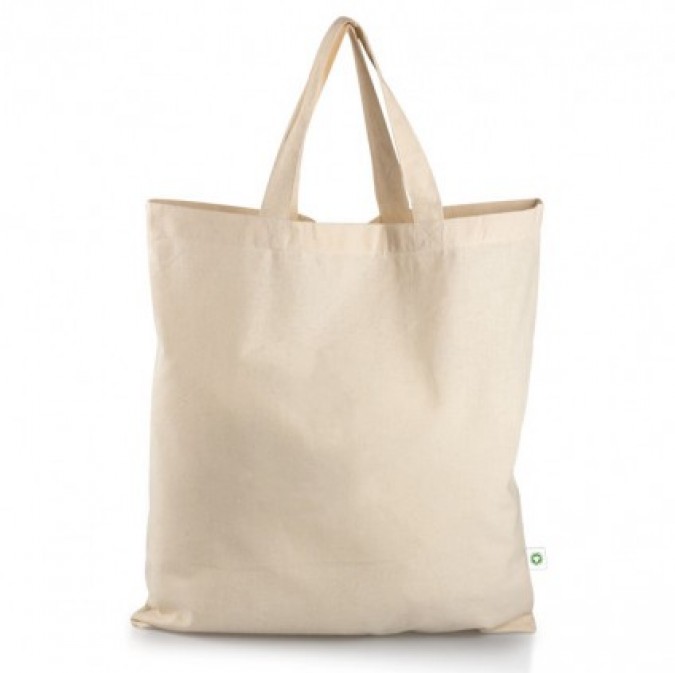
Jute bags
Jute is the most commonly used fiber after cotton. It’s a long, soft and vegetable fiber from a tropical plant that is spun into strong threads. Due to its rough texture, jute has its own look & feel, which makes it very popular.
Jute is grown by spreading seeds on cultivated soil. The plants are then thinned as soon as they are 15 to 20 cm tall. The harvest follows about 4 months after planting the seeds, involving the stems cut close to the ground and then soaked in water. During this process, the fabrics become soft, allowing them to be separated from the stems. Afterwards, they are dried and tied into bundles.
Advantages
- Production of jute fibers has a low chemical consumption, which makes jute bags very environmentally friendly
- Jute fibers are extremely durable, which allows the bags to be used for heavy objects
- Jute bags have a low CO2 footprint
Disadvantages
- Due to its coarse texture, it’s less suitable for complex prints
- The fabric is difficult to wash or clean
- Not very resistant to water or moisture
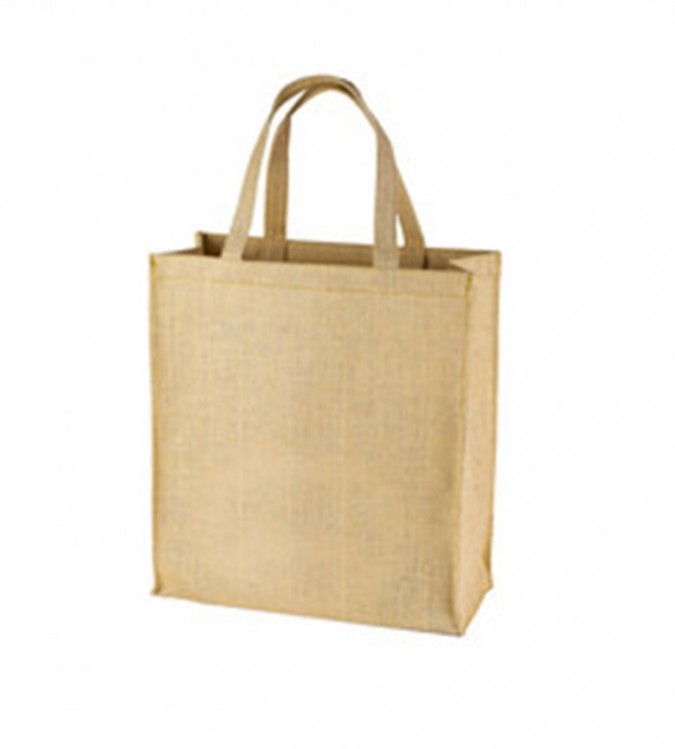
Non-woven and woven carrier bags
Our non-woven carrier bags are made from polymers, namely PP or polypropylene. During the production, small synthetic fibers are assembled and pressed together. These fibers are very strong, durable and reusable, which makes it a perfect material for carrying bags. They can be ordered in all varieties, sizes and shapes. Laminated or not, from simple to full color printing. With woven carrier bags, the fabric is woven and thus gets its strength. During the weaving process, one fabric is created by merging separate threads. This fabric is then used for the production of the carrier bags.
Advantages
- Reusable material
- The shape of the bag remains unchanged
- High carrying load
Disadvantages
- High recycling cost
- Often less hygienic due to, for example, the reuse of the bags in direct contact with food
- Cannot be cleaned as easily as the cotton or jute carrier bags
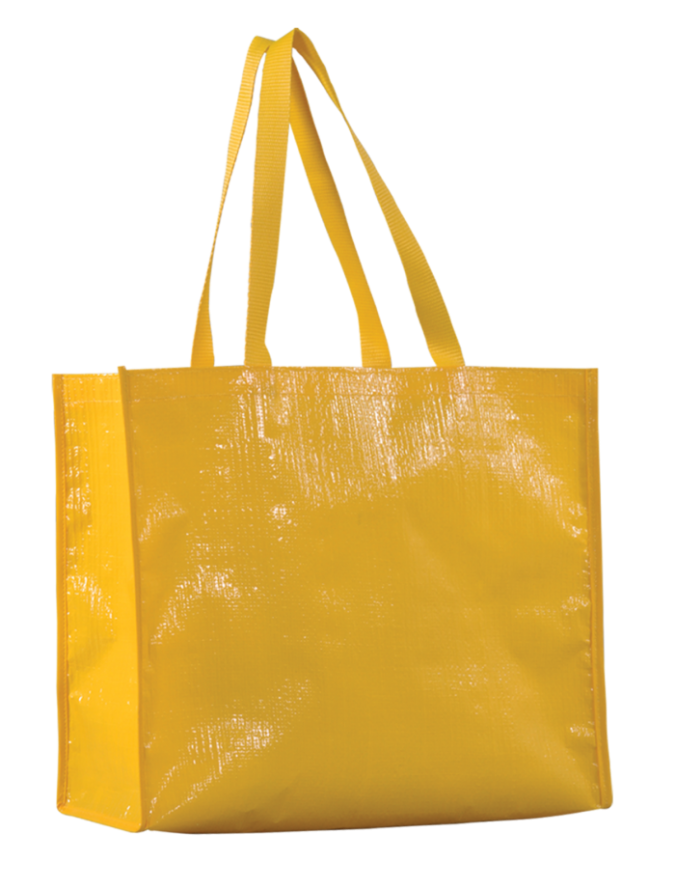
Our conclusion
There is not one clear answer to the question what the most sustainable packaging is. Because not so much the product itself determines the impact on the environment, but its use. So you should ask yourself what you want to use it for and what you want to emphasize when purchasing packaging materials. What message do you want to convey to your clients?
Do you already have an idea which durable packaging could be the best solution for you? Or do you need advice in determining an alternative? Feel free to contact us and we are happy to look for the best possible solution in your given case.
For the users of our online platform, we provide 2 additional documents!
In these documents, you can find more information about the cost and ecological impact on the environment of each product category. Furthermore, you can consult the legislation of plastic bags in Belgium.